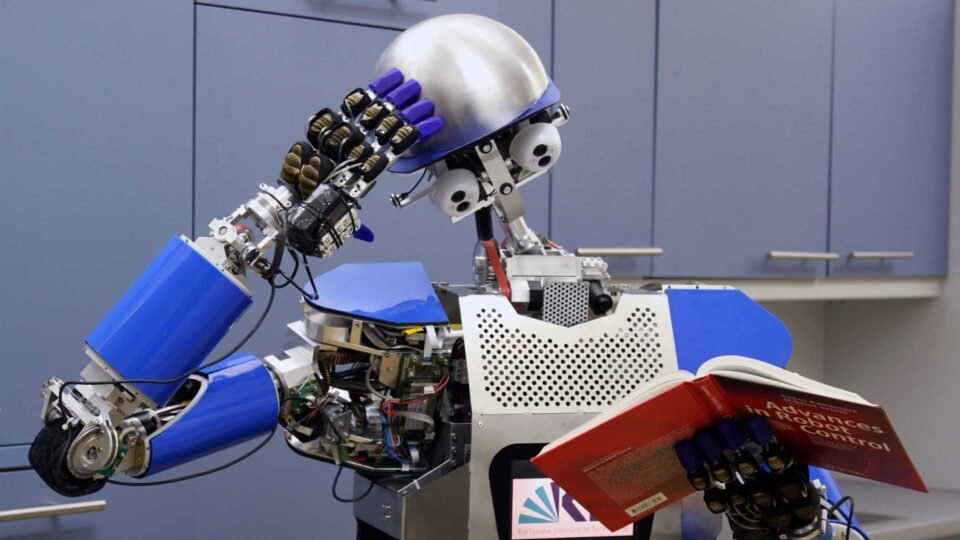The “AI and Robotics in A&D Market – Growth, Trends, COVID-19 Impact, and Forecasts (2021 – 2026)” report has been added to ResearchAndMarkets.com’s offering.
The AI and Robotics in A&D Market is projected to grow from USD 17.1 billion in 2020 to USD 36.64 billion, registering a CAGR of around 4.63% during the forecast period (2021-2026).
Companies Mentioned
- Airbus SE
- IBM
- The Boeing Company
- Nvidia Corporation
- General Electric Company
- Thales Group
- Lockheed Martin Corporation
- Intel Corporation
- Iris Automation Inc.
- SITA
Key Market Trends
Military Application Segment to Dominate During the Forecast Period
The plethora of applications of AI within the military segment, such as big data analytics for better decision making, automated logistics through the integration of unmanned ground vehicles (UGV), and unmanned aerial vehicles (UAV), bioinspired robots (swarm AI and deep neural networks), underwater mines location through neural networks, and object location, are expected to promote market growth during the forecast period. The rise in investments towards the development and integration of AI and robotics, coupled with enhanced defense budget allocation toward the R&D and acquisition of AI-based equipment are also anticipated to augment market prospects during the forecast period.
For instance, out of 21,000 equipment contracts published by of People’s Liberation Army’s (PLA) China in 2020, approximately 350 records were aligned to AI systems and equipment. In October 2021, NATO announced plans to launch an innovation fund worth USD 1 billion as its initial strategy to stay ahead of the competition within the AI vertical. In June 2021, Pentagon announced plans to spend USD 874 million on AI and machine learning technologies under DOD budget 2022 signifying a YoY increase of 50% in budget allocation towards AI-based technologies.
Asia-Pacific to Witness Highest Growth During the Forecast Period
Asia-Pacific is slated to witness the highest growth in the adoption of AI and ML technologies as the OEMs and operators alike are envisioned to enhance their investment in the AI integration processes across the supply chain. Countries such as Japan, South Korea, and China have emerged as the leading innovators in the field of AI development and integration. Many institutes in the region are involved in research activities pertaining to advanced applications of AI in the aviation industry. Numerous aircraft and associated components manufacturing units in Asia-Pacific have witnessed steady benefits from the incorporation of AI technologies.
For instance, the use of adaptive machining and cutting-edge automated inspection systems at the Pratt & Whitney facility in Singapore has caused steady growth in output volumes for the past couple of years and the facility achieved full production capacity in 2019. Moreover, innovations pertaining to AI are driving the growth of the market in the region. For instance, in May 2017, OpenJaw Technologies introduced its chatbot OpenJaw t-social, which is powered by IBM Watson AI, aimed at airlines, loyalty programs, and online travel agencies.
The chatbot can adjust its responses based on the scope of the questions asked and gains intelligence with time through machine learning. China envisions to use AI technologies to strengthen the People’s Liberation Army (PLA) by enabling it to engage in intelligent warfare, defined by strategists as the operationalization of AI and its enabling technologies, such as cloud computing, big data analytics, quantum information, and unmanned systems, for military applications. The PLA aims to achieve full modernization by 2035 and at par with the US military by 2050. In 2017, China unveiled the New Generation Artificial Intelligence Development Plan outlining its strategy for the development of AI for defense applications such as providing support to command and decision-making, military deductions, defense equipment, and other applications.
Key Topics Covered:
1 INTRODUCTION
2 RESEARCH METHODOLOGY
3 EXECUTIVE SUMMARY
4 MARKET DYNAMICS
4.1 Market Overview
4.2 Market Drivers
4.3 Market Restraints
4.4 Porter’s Five Forces Analysis
5 MARKET SEGMENTATION
5.1 Offering
5.1.1 Hardware
5.1.2 Software
5.1.3 Service
5.2 Application
5.2.1 Military
5.2.2 Commercial Aviation
5.2.3 Space
5.3 Geography
5.3.1 North America
5.3.2 Europe
5.3.3 Asia-Pacific
5.3.4 Rest of the World
6 COMPETITIVE LANDSCAPE
6.1 Vendor Market Share
6.2 Company Profiles
7 MARKET OPPORTUNITIES AND FUTURE TRENDS
For more such updates and perspectives around Digital Innovation, IoT, Data Infrastructure, AI & Cybersecurity, go to AI-Techpark.com.

